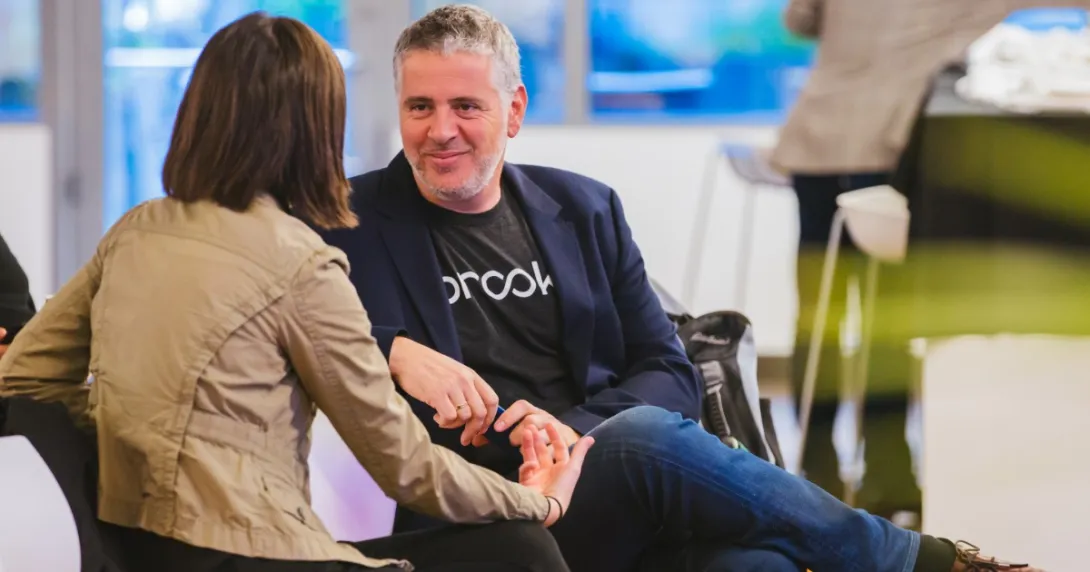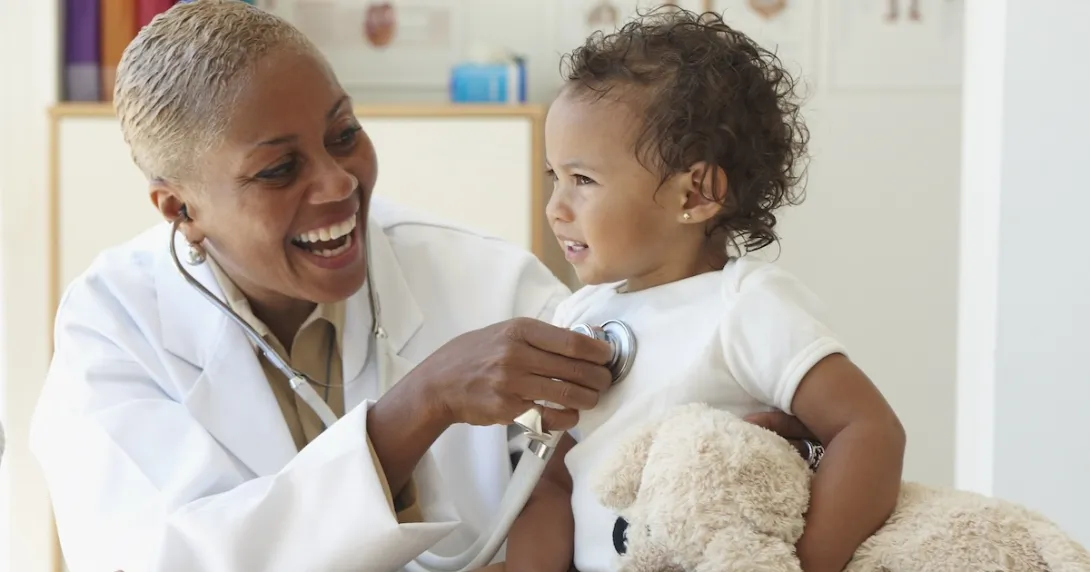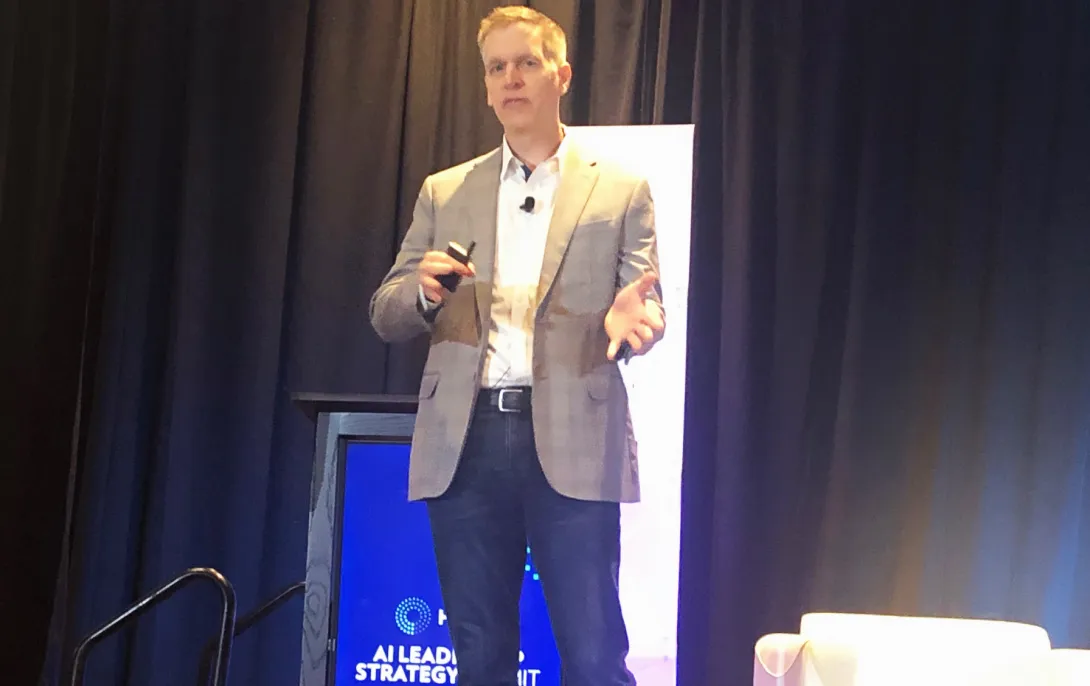
Oren Nissim, CEO and founder, Brook.ai
Photo: Oren Nissim
Although remote patient monitoring and other at-home health services are gaining in popularity, they're still new to healthcare. In fact, these services only started to pick up traction in 2019, after the Centers for Medicare and Medicaid Services introduced billing codes that made these services an option for providers across the country.
This change laid the groundwork for more types of healthcare services at home, and it continues to grow and be successful because remote care and at-home services can deliver quality patient outcomes at a lower cost.
Interest and adoption are continuing to grow as the industry gets closer to the significant changes proposed by CMS for 2026. These changes include new CPT codes for short device periods from 2-15 days and short clinical interactions from 10-19 minutes. This is a huge change from the prior billable thresholds, expanding access to remote care for more providers, and as a result, more patients.
These changes aren't just logistical – they're an important recognition of the way patients access healthcare, and particularly remote care, in the real world, said Oren Nissim, CEO and founder of Brook.ai, a remote patient care company.
The changes also acknowledge there is clinical value in brief encounters and check-ins as well as less frequent monitoring – and these codes are not replacing what was already there but rather supplementing them, he added.
We spoke with Nissim to get his expertise on the changing environment for remote patient monitoring; how CMS's endorsement of RPM looks for the technology, hospitals and health systems, and health equity; how RPM can reduce strain on limited nursing resources and offer a sustainable care model; and the results from his RPM client UMass Memorial Health/Harrington's remote care deployment, where the technology has helped cut 30-day all-cause CHF readmissions by 50%.
Q. What other changes are coming to healthcare that might significantly impact patients and providers who want to use – and can benefit from – remote care services?
A. Signed into law on July 4, 2025, the One Big Beautiful Bill included a significant investment in digital health, and particularly health programs and services for rural communities. At its core, the legislation commits $50 billion over five years to the Rural Health Transformation Program, with the aim of expanding access to care, supporting technology adoption and modernizing the country's healthcare infrastructure.
OBBB is a strong endorsement for digital health, and in particular for access to quality healthcare in rural areas. This is critical given changes that are happening in other areas of healthcare. For example, previously, services provided at hospitals, even when the same as those provided at outpatient clinics, could be billed at a higher rate. This is no longer the case, which increases the need for the cost-effectiveness of remote care.
Importantly, it's not the bills themselves that really matter, but what happens after the bills that makes significant and impactful change for patients and providers. We'll continue to see those changes occur over the next several years and really see how remote care is benefiting patients.
Q. Through the bill, CMS is endorsing RPM through reimbursement pathways and positive clinical outcomes. How does this look for the technology, hospitals and health systems, and health equity?
A. The federal government's decision to support remote care through expanded reimbursement pathways is having a noticeable impact across the healthcare landscape. In the past, remote care has been seen as an innovative add-on, but with CMS support and reimbursement eligibility, it is quickly becoming a standard of care in chronic care management.
Inclusion in federal policy and healthcare planning not only gives remote care technology stronger market validation but provides a clear path to scale, compete and invest in developing new features. At the same time, the focus on outcomes-based reimbursement is also driving technological improvement and capability – vendors are no longer simply delivering devices. Instead, they are working with providers to demonstrate real-world clinical improvements, like better blood pressure control and fewer trips to the emergency room.
Vendor response to these incentives and requirements is already resulting in more user-friendly interfaces, increased interoperability to better serve patients across providers, and the natural integration of AI.
These changes are also unveiling a host of new opportunities and challenges for hospitals and health systems. The ability to bill for remote care services using established CPT codes has created new revenue streams for hospitals, where margins have been increasingly tight. The effects have been prominent in helping health systems deal with persistent provider shortages.
Because remote care enables more efficient and timelier triage and monitoring, care teams can spend more time with patients – in particular those with the greatest need – instead of on paperwork.
As a result, many health systems are integrating remote care into their total health strategies, shifting away from the traditional, in-person models of care to proactive, data-driven care models that combine the strengths of in-person and virtual care.
This shift has made a significant impact on the management of chronic conditions like diabetes, heart failure and COPD – all conditions in which early intervention reduces acute events and emergency room visits and improves overall patient outcomes and quality of life.
But adoption of remote care doesn't happen overnight. It requires a strong commitment from health systems, and an investment in digital infrastructure, data integration and cybersecurity, to manage and protect the many new streams of patient data that will become accessible and usable.
That's where health equity really comes into the picture. On the one hand, remote monitoring has the ability to greatly expand access to quality healthcare, bringing it to rural, homebound or transportation-limited patients. With a federal commitment to funding health transformation, it's entirely possible to close these long-standing gaps in access to quality healthcare.
But not all patients – and particularly those in most need of remote care – have the same level of access to broadband internet, connected devices or support for digital literacy.
Delivering digital health equitably and truly delivering on the promise of remote care requires vendors and health systems alike to invest in technologies that are culturally competent, multi-lingual, easy to use and mobile first – meaning they don't rely on broadband internet so new models of care intended to help vulnerable populations don't instead leave them further behind.
Q. How can RPM reduce strain on limited nursing resources and offer a sustainable care model in an era of ongoing workforce shortages?
A. The National Center for Health Workforce Analysis has projected there will be a shortage of 1.2 million healthcare professionals by 2033, including 124,000 physicians. That attrition has already begun, and the American Association of Colleges of Nursing has found there will be a nursing shortage of between 200,000 to 450,000 qualified nurses by the end of 2025, as thousands exit the field with not enough trained professionals entering to replace them.
The high levels of workforce attrition in healthcare make remote care even more critical. By rethinking care workflows and leveraging technology to relieve burdens on staff, remote care can reduce the strain on already limited nursing resources while simultaneously supporting more sustainable care models.
Remote care can make that happen in a number of ways. For example, automating routine monitoring tasks. Remote care services are built to automate the collection and baseline analysis of vital signs and health data, eliminating the need for frequent manual checks. This continuous stream of real-time data frees up care teams to spend their time on tasks where their skills and expertise make the most difference: interpretation, patient education and timely intervention.
Another example is triage by exception. One of the most practical and immediate benefits of remote care is its ability to flag patients whose data falls outside established thresholds. In practice, this means nurses no longer have to sift through every patient's data every day, and they can focus more attention on the patients who need it most.
Then there's extending clinical reach. The centralized dashboards that come with remote care make it possible for a single nurse to monitor dozens of patients compared to the handful they may be able to handle without one. This is particularly valuable in home health, chronic care and post-discharge monitoring settings where in-person visits are difficult to schedule and resource-intensive.
Further, there's preventing avoidable hospitalizations. Continuous, real-time patient monitoring enables early intervention, which in turn reduces hospitalizations. When health issues are flagged early, nurses and physicians can adjust care plans and medications quickly, preventing avoidable escalation.
The bottom line is remote care is vital to reducing care team workloads, enabling proactive and quicker interventions, and creating sustainable care models. As the labor pool continues to shrink, health systems can leverage remote care to maintain quality of care, support their care teams and keep patients healthier.
Q. Please discuss the results from your RPM client UMass Memorial Health-Harrington where you report remote care has helped cut 30-day all-cause CHF readmissions by 50%.
A. Remote care isn't a future technology – it's impacting healthcare right now. Our recent work with UMass Memorial Health-Harrington is a clear example of how remote care can positively impact health systems and their patients.
In 2023, Brook.ai and Harrington launched a remote monitoring program for congestive heart failure using Brook's remote care platform to help these patients better manage their condition at home. Within three months, these patients experienced a 50% reduction in all-cause 30-day readmissions. That kind of result makes a huge difference, not just for hospital statistics, but for patients and their families.
The simplicity of the program is part of what makes it stand out. Harrington provided participating patients with internet-connected scales and blood pressure cuffs that allowed them to track their health data from home on the Brook health app. That same data was made available via the hospital-side dashboard to Harrington's nurses, who then were able to proactively reach out to patients who needed more support and education, troubleshooting, or care coordination.
But the program was, and is, more than that. It also helped patients with stress management, health literacy and ongoing access to care no matter where they were. That kind of personalized, proactive care helps providers and patients get in front of problems before they get bigger.
Especially when it comes to chronic conditions, remote care breaks down barriers that often stand in the way of good care and quality of life. Patients who struggle with heart failure, for example, often also have difficulty keeping frequent in-patient appointments. Remote care and monitoring helps these patients stay engaged in their own care and both feel and be supported by their care team.
And it gives care teams access to the day-to-day information they otherwise wouldn't have, helping them make better decisions and coordinate care more effectively.
And this is just one of the programs Harrington has established. Their Digital Health Clinic has launched similar remote programs for high blood pressure, diabetes and COPD, all of which have seen positive results for patients and their short- and long-term health.
Working with Harrington has revealed just how powerful remote care can be in helping patients get and stay healthy, and these examples continue to shape how we think about chronic care management, and the technological advances we make.
Follow Bill's health IT coverage on LinkedIn: Bill Siwicki
Email him: bsiwicki@himss.org
Healthcare IT News is a HIMSS Media publication.
WATCH NOW: Virtual health produces outcome differences


